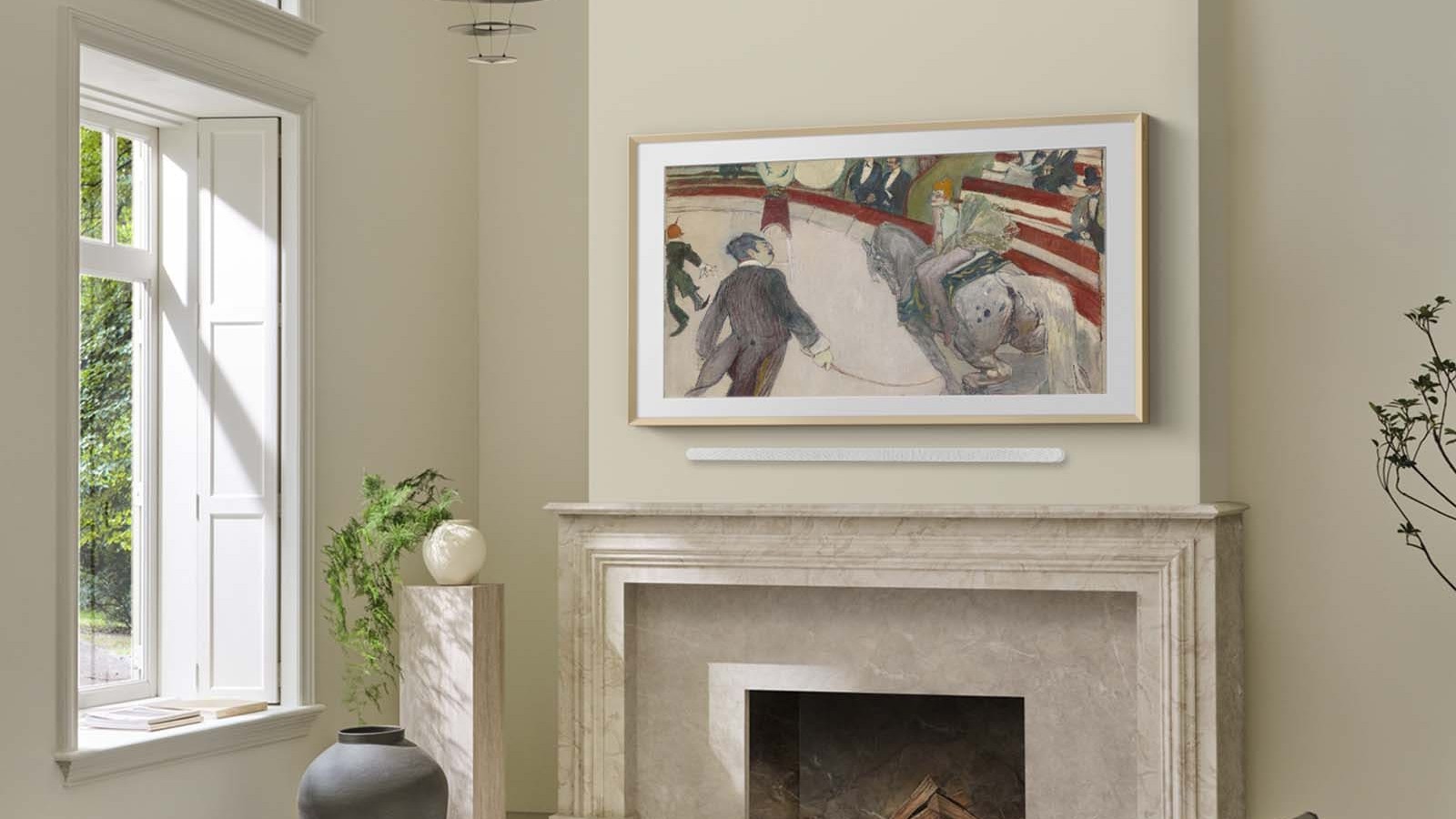
TVs provide a bit of a design conundrum. Generally, we want a big screen for full immersion with our boxsets, but the larger the screen, the more of an eyesore it becomes.
In 2017, Samsung was able to square this circle with its first iteration of The Frame — a TV that looked less like technology, and more like a framed painting when not in use.
Its matte panel and ability to display art made it an instant hit with those prioritizing aesthetics above all else. But for videophiles, it historically hasn’t been the best choice, with weaker picture quality than similar TVs in the price bracket.
With a number of high-profile alternatives to The Frame, Samsung is revisiting the formula with a higher-end version. The Frame Pro is new for 2025, offering far better image quality and even less intrusive design, though you’ll pay more for the improvements.
Here’s how the new The Frame Pro stacks up against the latest regular version of The Frame.
The Frame Pro vs The Frame: Pricing and Sizing

Samsung’s 2025 range of Frame TVs is spread across six sizes, with only a 65-inch screen available for both versions. At this size, the regular version costs £1,899 and the Pro model £200 more at £2,099, so it looks like Samsung puts a premium on the Pro upgrades.
Otherwise, if you want larger, you’ll need a Pro, and if you want smaller you’re looking at the regular model. The Frame can also be bought in 43-inch (£1,099), 50-inch (£1,299) and 55-inch (£1,499) sizes. The Frame Pro, meanwhile, can be had with a larger 75-inch (£2,999) or 85-inch (£3,999) panel.
The Frame Pro vs The Frame: What’s the Difference?

Choice of screen sizes aside, two key enhancements justify the price differences.
The first is the screen technology used. While The Frame has always used QLED technology, The Frame Pro upgrades to Samsung’s Neo QLED panel. This is Samsung’s branding for Mini-LED technology, an OLED alternative which provides superior brightness and far better contrast due to thousands of LED backlights capable of illuminating parts of the screen without uniformity.
There’s a small catch, however. As The Verge notes, for The Frame Pro, the Mini LEDs are all at the bottom of the display, firing upwards, rather than behind the entire display, which suggests brightness will be less tightly controlled.
Still, it should make it no contest between the regular Frame and The Frame Pro in terms of picture quality, both for watching TV programmes and enjoying artwork. That said, you can do better on that front if you’re prepared to have a more traditional-looking TV in your living room. Better still if your room isn’t too bright for OLED.
Starting at £2,099, the Frame Pro comes in slightly larger sizes than the standard The Frame, has a wireless OneConnect box, and increased picture quality. The new Samsung The Frame TVs, both Pro and standard, come with Samsung's new Vision AI technology, too.

The second difference plays to the TV’s aesthetics. To keep cabling to a minimum, The Frame has sold with a One Connect Box, which puts all of your HDMI and USB connections to an external box, requiring just a single wire to your TV, tidying up things considerably.
For The Frame Pro, this is now wireless and works at a distance of up to ten metres, even with obstacles in its path (though you’ll still need a power lead to connect directly to the TV, of course).
This is obviously great for aesthetics, especially if you have an outlet behind the TV to hide the power lead, but if you ever use your TV for gaming, you might want to look elsewhere, as wireless data transfer adds input lag.
Our sister site, TechRadar, measured the Wireless One Connect Box and found it to add around 20 milliseconds at 4K 60Hz — not a huge amount, but still worse than a direct cable connection. The site does add, however, that Samsung claims The Frame Pro can hit sub-10 milliseconds with the Wireless One Connect Box at 4K 120Hz, but that couldn’t be tested at the time of writing.
The Frame Pro: Something for Aesthetically-Minded Videophiles
Size, screen quality and Wireless One Connect Box aside, the TVs are essentially the same, with the regular Frame upgraded to 144Hz this time around too. Both TVs also support Samsung’s brand new Vision AI platform [LINK], thanks to the NQ4 AI Gen3 processor powering them.
To be clear, you’re still paying a premium for aesthetics, and plenty of TVs will offer better picture quality, including Samsung’s own OLED sets. But if you want the best-looking TV with improved image quality for movie night, then The Frame Pro is almost certainly the way to go in 2025.







